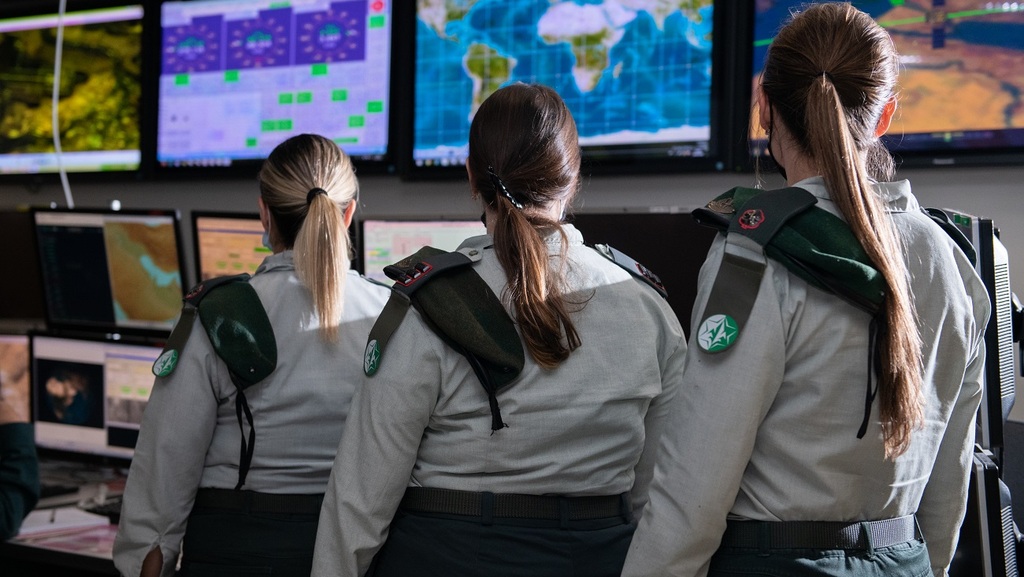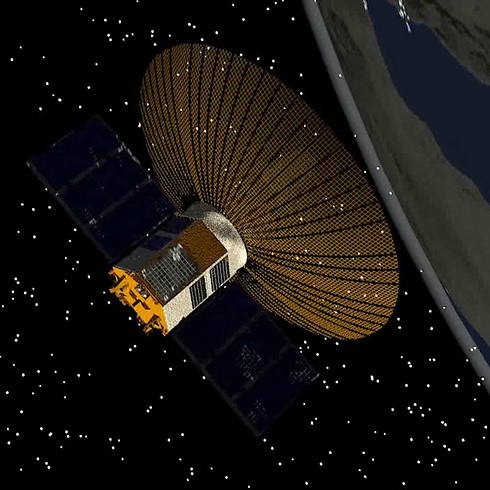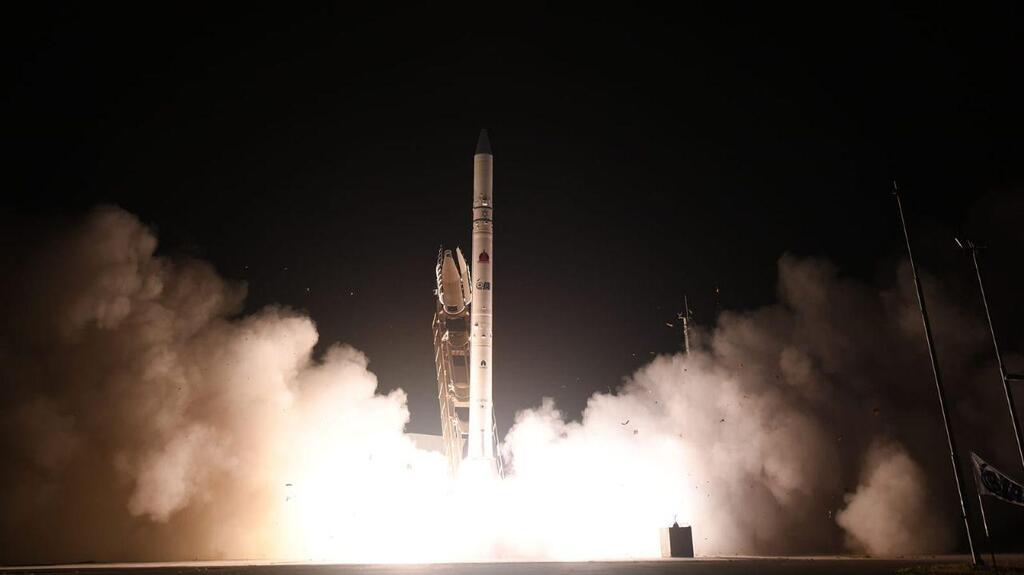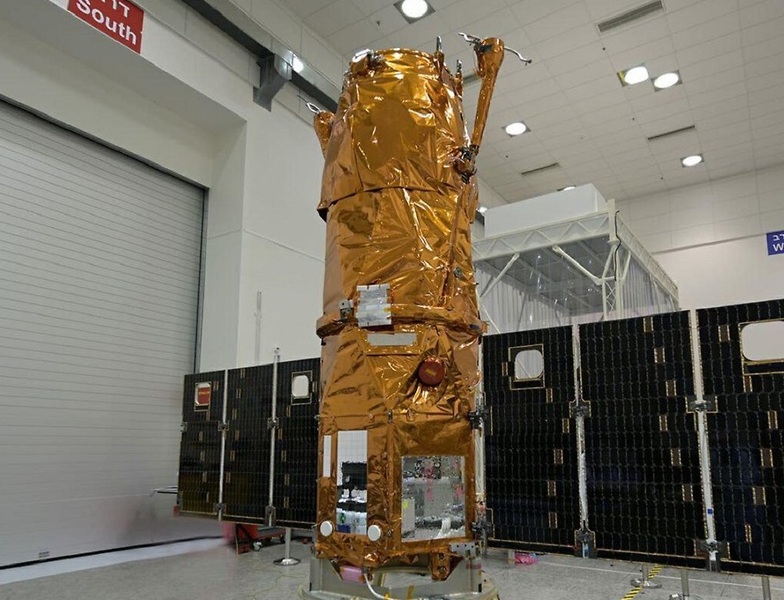Getting your Trinity Audio player ready...
One of the most sensitive military intelligence units recently celebrated a major anniversary. There was even cake and a card to congratulate unit members on the achievements of the past year.
The IDF's satellite unit was marking seven years since the launch of the Ofek 10 into orbit and only the guest of honor was missing. It was circling the earth in -270°C (-454°F) temperatures.
The command center of Unit 9900 is far less futuristic-looking or impressive than one would expect, given the technology it is using, with screens showing aerial maps and satellite routes dotted all along the walls.
While most such command centers employ engineers in their 40s, here the satellites are operated by mostly female 19-year-old soldiers selected after they excelled in math in high school and were put through a rigorous five-month course.
The soldiers must sign on to serve a year longer than their peers who are completing their national service.
"We search for creative nerds with extra credit in mathematics, physics, computer studies but also theater, arts and dance," says Captain S., a 32-year-old aerospace engineer from Holon who is in the final stages of pregnancy.
"Technology is not the only criteria. We need people who can problem solve because we often encounter situations that require real-time sensible decision-making to prioritize satellite missions. Our soldiers must know how best to put this valuable resource to use. While the number of satellites in space is increasing, our team size remains the same," she says.
"We have a personal connection with our satellites," says Captain S.
"Some of our work here is not just to retrieve information for intelligence purposes but also to ensure the longevity of the satellite. Our babies are each worth upwards of $100 million and we must be attuned to their problems so that we can solve them remotely," she says.
"In our unit, we celebrate each satellite's birthday according to the day of launch. Our work is very stressful, and we need these moments of celebration to blow off some steam."
The soldiers in the unit call each one of their six operational satellites "national assets" - and rightly so.
The unit was created a little over 40 years ago, with a handful of diehards from the intelligence corps under the leadership of Brig. Gen. Haim Eshed.
Eshed convinced then-prime minister Menachem Begin that this small and not very wealthy nation was capable of building and launching spy satellites into space.
It was a feat costing billions of dollars that only superpowers such as the United States or the former Soviet Union had achieved.
Now, after years of effort and a share of failures, satellites are a main tool in Israel's intelligence gathering.
The foreign media often reports on alleged Israeli attacks behind enemy lines, in Syria, Iraq, the Red Sea and Africa.
Recently such reports described mysterious attacks on Iranian vessels and inside nuclear facilities in Iran. Such operations could not be carried out without a constant 24/7 flow of intelligence made possible by satellites.
5 View gallery
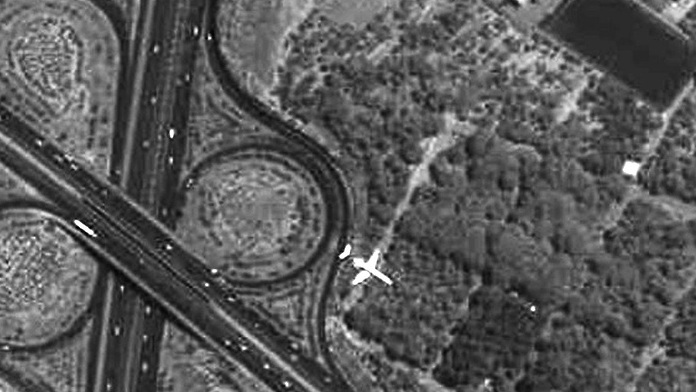

A passenger plane flying in an enemy country as snapped by the Ofek satellite
(Photo: IDF Spokesperson's Unit)
Originally, the satellites were meant to alert Israel to possible Egyptian violations of the 1979 Camp David peace accords but over time (and with the financial assistance of South Africa, according to foreign media reports), they have become a key tool in the fight against Iranian aggression, detecting new missile sites, suspicious vessels or convoys transporting weapons anywhere in the region.
The unit that operates the satellite center was awarded a commendation by the IDF chief of staff for its role in the success of a covert operation against Iran, carried out by branches of the military and the Mossad intelligence agency.
There are six spy satellites in orbit at the same time, each completing a full circle around earth every 90 minutes, which translates to 96 orbits in a 24-hour period or one every 15 minutes.
Operators have a 15-minute window in which to relay instructions, download images and update software as they remotely handle their refrigerator-sized, 350-kilogram equipment operating in the harsh conditions of space.
Ofek 16, the newest satellite that was launched in July 2020, became operational in recent weeks, giving Israel its largest fleet so far.
It too is deserving of celebration, for after a long process that included calibrating its camera and embedding it into the military's intelligence data systems, it has begun providing better quality images than any of its predecessors.
"Most of the work is planned in advance but a call can always come in on a Friday night, from the head of Military Intelligence or the chief of staff with a particular request. And it is up to us to provide them with the images they require," says 32-year-old Lt. M., a systems engineer.
"We can't share any of this with our families," she says. "They have become accustomed to our discretion and we've all developed a poker face to use when the media reports about events that we have been working on."
Sixty-two percent of the satellite operators are female, making it perhaps the most predominantly female operational unit in the IDF. Even the officers' pool is primarily made up of women.
"It has been like this since I began my military service," says Captain S. The staff made the necessary adjustments to enable her to work secluded from others to protect her pregnancy during the coronavirus pandemic.
"We are no different from Google or Facebook. I am on track to be promoted to colonel and no one is questioning my gender. I don't know why it works so well but it does. I have a new baby on the way and a toddler at home and I am happy to work in an environment that allows women to thrive so much so that gender has become a non-issue."
Captain H., a 24-year-old systems engineer is part of the new generation of officers in the unit. She began as a satellite operator when she enlisted in the military after high school.
"When I had to decide whether to stay on in the unit, I had other young female officers to consult with and not only male commanders," she says.
"I still take on satellite operator shifts to stay up to speed and be able to support the soldiers on duty when they face a difficult challenge in the middle of the night. We could easily lose a satellite if we are not alert at all times — and we would like to celebrate our babies in space for a long time to come."


